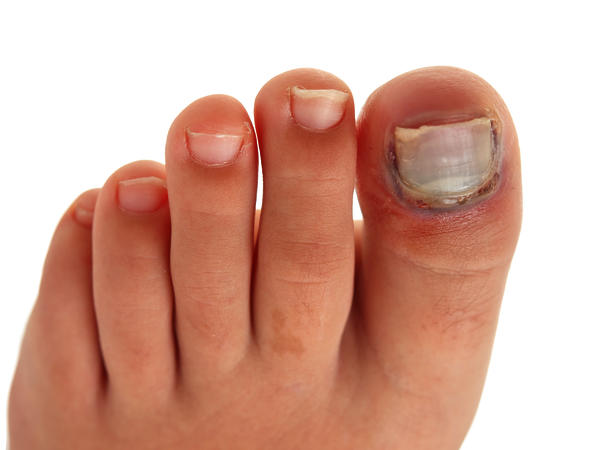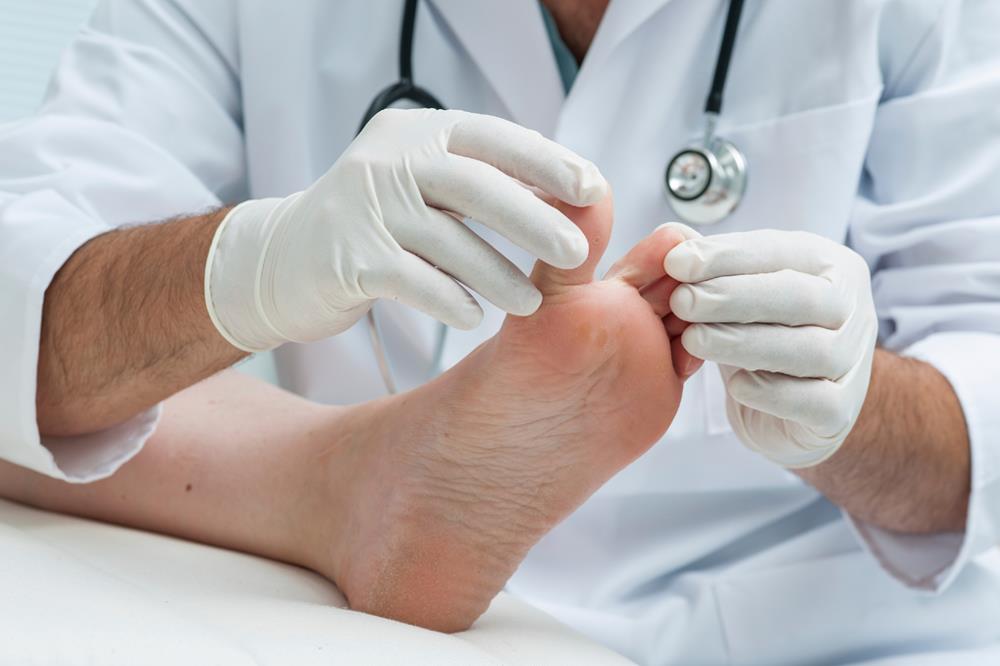Apart from being a cause for embarrassment, a toenail that is about to fall off can cause a lot of pain to you as well. Toenails fall because of two main reasons – external injuries or fungal infections. In order to give you a better understanding, this article will cover everything that you need to know about toenails, right from signs your toenail will fall offto when to visit a doctor.
What Causes Your Toenail to Fall Off?
1. Injury

Sometimes, strenuous physical activities, like cardio, aerobics or even sports like football, can result in your toenails being scraped against the inside of your shoes. In certain cases, it adds pressure on your nail beds, wherein the blood vessels break due to excessive pressure. This in turn causes bleeding and excessive bleeding can result in your toenail falling off. This phenomenon, also known as subungual hematoma, can also occur with extremely tight fitting shoes.
Signs your toenail will fall off include:
- Discoloration that is black-blue in color
- Pain, redness
- Swelling and tenderness of the affected toe
- Distorted shape of nail
Immediately contact your doctor because there really isn’t any home remedy that can cure you. The doctor will drill a hole into your nail bed in order to get rid of all the accumulated blood that seeped out when your blood vessels burst. A new nail will grow in a few weeks’ time, so there is no need to worry.
2. Fungal Infection

Fungus can survive practically on any part of your body once it has infected it. Its biggest enabler is a moist and warm atmosphere, and this fungus stays alive by feeding off keratin (the substance your nail is made of).
Signs your toenail will fall off include:
- Splitting
- Crumbling of nail
- Discoloration of nail, mostly yellow, white or light brown
- Nail becoming looser from its bed
- Peeling
- Nail becomes thicker
- Pain, swelling, redness
- Discharge from your nail bed
3. Other Reasons for Your Toenail Falling Off
- Eczema: In certain cases, those suffering from dermatitis can have their nail beds affected as well, which in turn results in crumbly nails, loss of toe and finger nails.
- Excessive moisture: Exposure to excessive/constant moisture weakens the toenails, which makes it easier for them to become looser and fall off.
- Bacterial infection: This form of infection is more common among senior citizens due to their poor immune systems.
- Viral infection: Excessive moisture (water, sweat) or repeated minor traumas can cause virus to infect and grow among your toenails, infecting your nail bed.
- Psoriasis: This is an autoimmune condition in which the overproduction of new skin cells causes the finger and toe nails separate entirely from the nail bed, thus making them fall off.
Treating Toenail That Is About To Fall Off
Now that you know about various signs your toenail will fall off,it’s time to learn how to treat the problem you’re facing:
- Dip your feet into a foot soak. To make your own soak, just take a big bowl of warm water, and add 1 tbsp. salt to it. Keep your feet dipped in this mixture for at least 15 minutes, and use this mixture 2-3 times a day to soak your feet.
- To prevent bruising, use an ice pack on your toenail for 5 minutes, 2-3 times a day.
- Keep your leg elevated so that blood flow towards the infected area is kept to a minimum.
- Try and use benzalkonium chloride two times a day. Not only does it keep infection at bay, but its antiseptic properties also help keep the area clean.
- Apply petroleum jelly on the area after you’ve patted it dry. It acts as a barrier and not only locks in moisture, but lowers your chances of catching another infection.
- Cover with a bandage and keep the bandage away from water.
- Apply tea tree or neem oil to the affected area 3-4 times a day to fight infections.
- A turmeric paste made from equal parts of turmeric, honey and rose water works just as well.
How You Can Prevent Losing a Toenail
Now that you’re done with signs your toenail will fall off,and how to treat your problem, here are tips on how to prevent this from happening to you again.
- Keep an eye out for signs that show your toe may have been infected. Tenderness, swelling, redness, increased pain and increased temperature around that area are some of the most telling signs.
- Wear loose shoes so that your toenail doesn’t bump against the show’s surface when you’re walking. This will prevent nail trauma. Make sure there is a ½ inch gap between your show and your longest toe.
- Wear cotton socks that allow your feet to breathe, thus preventing accumulation of sweat. Make sure you wash your socks regularly.
- Never walk barefoot, especially in places like swimming pools and showers.
- Wipe your feet immediately when they come in contact with water/moisture or if they become too sweaty.
- If the weather is too humid or cold for your feet to air dry, use a blow dryer to dry your feet.
- Use mild soaps (preferably ones for sensitive skin) to wash your feet.
- Cut your toenails to a short length in order to avoid nail injury.
- Avoid applying nail polish or sanitizer to your feet.
- If you work in an area that demands you come in constant contact with heavy objects, and then wear shoes that have steel toe boxes.
- Avoid physical activities as much as you can, because they increase your chances of accidents happening.
- If your redness, pain, or swelling remains the same, or increases even after trying home remedies
- If you see blood or pus seeping through your bandages
- If there’s a foul odor emanating from your hurt nail
- If you feel extreme discomfort or are unable to put pressure on your leg because of your broken nail
When to See Your Doctor
In case of a fungal infection, your doctor will give you oral or topical anti-fungal treatments to treat the infection. Remember to always turn to your primary care doctor for more information, including changes in your home treatment. One wrong move from your end could potentially worsen your condition.